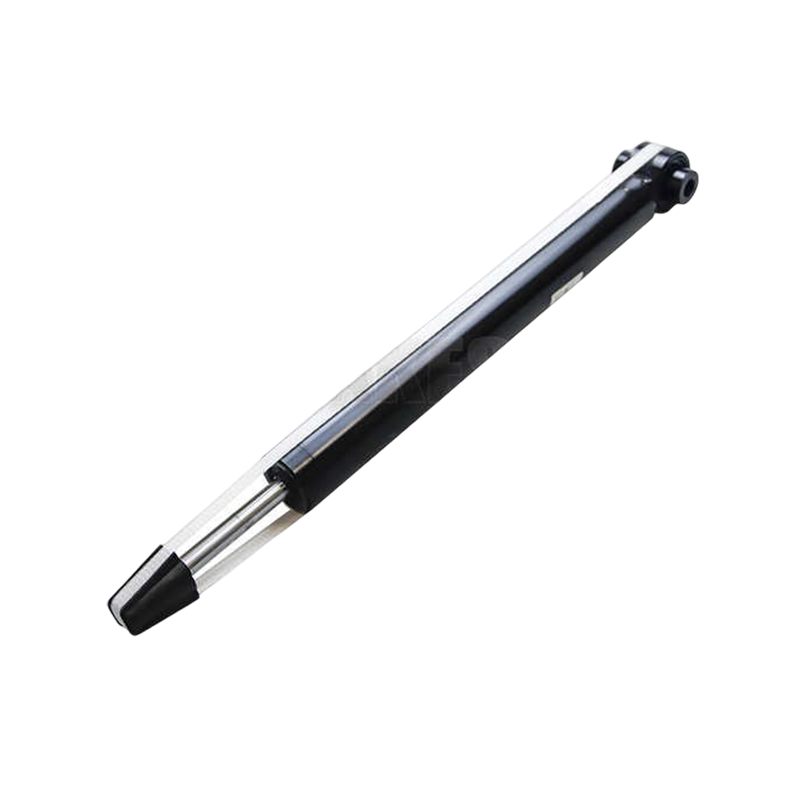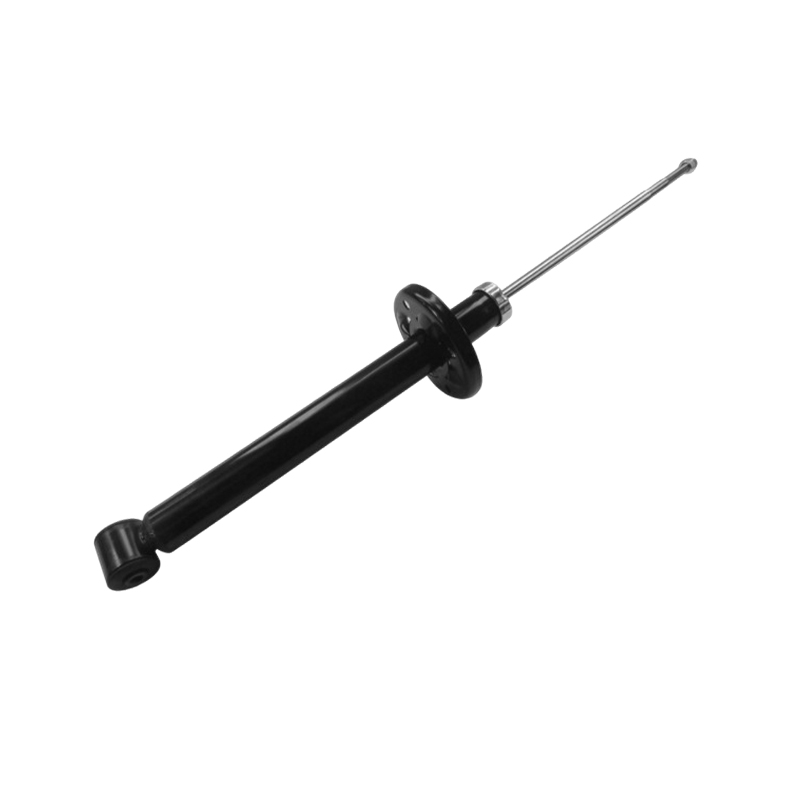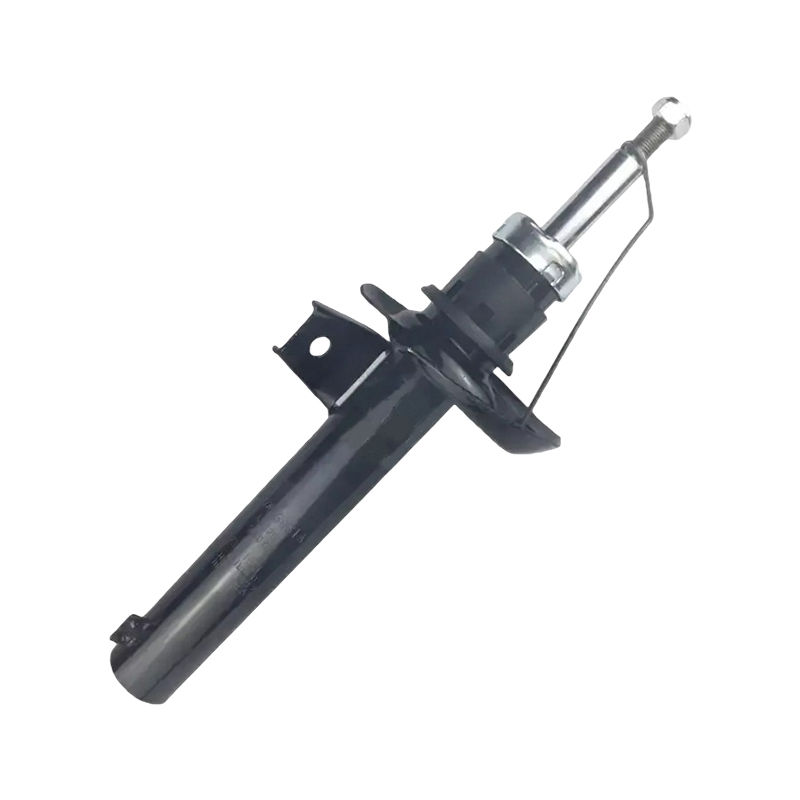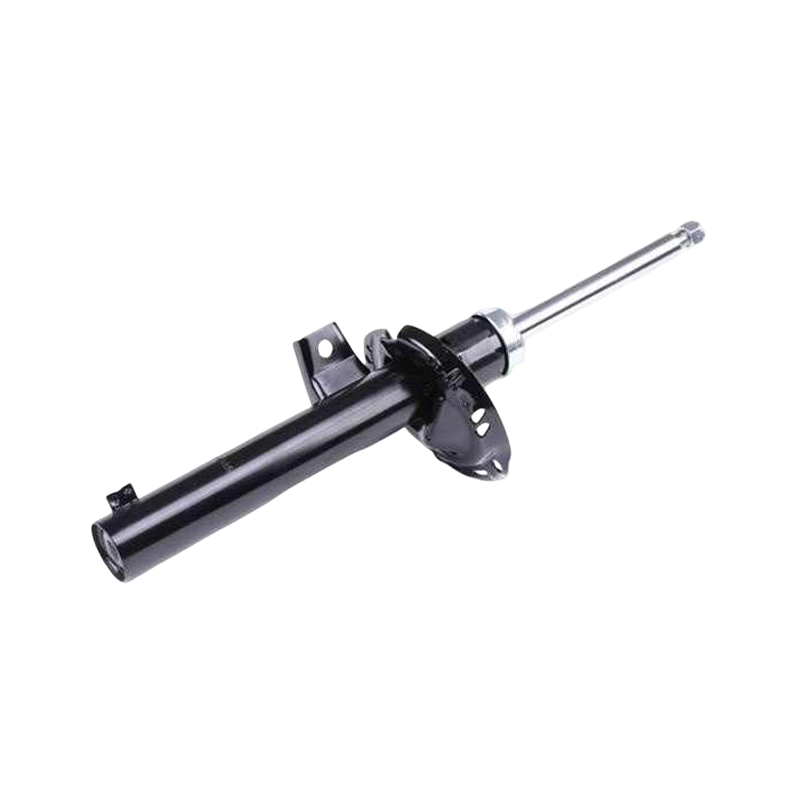Does the front shock absorber have a good heat dissipation design to maintain stable performance?
Release Time : 2025-10-03
During vehicle operation, the front shock absorber, as a core component of the suspension system, continuously absorbs impacts and vibrations from the road. Its performance directly affects vehicle handling stability, ride comfort, and driving safety. Especially during high-speed driving, continuous cornering, on mountainous roads, or in complex road conditions, the shock absorber undergoes frequent compression and rebound movements. The hydraulic oil inside is continuously compressed and sheared by the reciprocating piston, generating a large amount of heat. If this heat cannot be dissipated quickly, the oil temperature will rise sharply, leading to a decrease in oil viscosity, reduced damping force, and even "thermal fatigue," causing the shock absorber to lose its control function and severely affecting vehicle handling and braking stability. Therefore, whether the front shock absorber has a good heat dissipation design is a key factor in evaluating its performance and reliability.
High-quality front shock absorbers consider heat management from the initial design stage, optimizing heat dissipation through various structural and material approaches. First, the outer casing often features a longer oil reservoir or an external reservoir to increase oil capacity. More oil not only absorbs more heat but also extends the oil circulation path, slowing down the temperature rise. Some high-performance shock absorbers use aluminum alloy for the outer cylinder, utilizing its excellent thermal conductivity to quickly transfer heat to the surface, where it is dissipated by air convection. This passive cooling mechanism is particularly effective during continuous bumps or high-speed driving, maintaining oil temperature within a reasonable range and preventing performance fluctuations due to overheating.
Furthermore, the surface treatment of the shock absorber also plays an important role in heat dissipation. Some products use finned or corrugated casing designs, significantly increasing the surface area in contact with air and improving natural convection efficiency. As the vehicle moves, the airflow continuously flows over the shock absorber, carrying away accumulated heat, providing continuous cooling. This design requires no additional energy but significantly improves heat dissipation, especially suitable for long-term, high-load operation, such as long-distance driving, racing, or off-road driving. In terms of internal structure, an advanced piston valve system design minimizes unnecessary energy loss, thus reducing heat generation. By optimizing the damping orifice layout and valve response characteristics, the shock absorber can provide sufficient damping force while reducing the severe friction and turbulence of hydraulic oil as it flows through the valve system, effectively suppressing heat generation at its source. Furthermore, high-quality shock absorber fluid boasts excellent thermal stability and oxidation resistance, maintaining consistent viscosity even at high temperatures, ensuring consistent damping force output and preventing performance degradation due to fluid deterioration.
Effective heat dissipation is crucial not only for immediate performance but also for the long-term reliability of the shock absorber. Prolonged high temperatures accelerate seal aging, leading to hardening, cracking, and eventual oil leakage. Effective heat dissipation extends the lifespan of sealing materials, maintains stable internal pressure, and ensures consistent damping performance throughout the shock absorber's lifespan. Stable oil temperature also helps maintain the correct gas-to-liquid ratio, preventing uneven gas-liquid mixing or cavitation due to thermal expansion, further ensuring linear and precise damping response.
In real-world driving conditions, a front shock absorber with good heat dissipation maintains stable performance under various extreme conditions. Whether during frequent braking on a long downhill slope or lateral loads during high-speed cornering, the shock absorber consistently provides consistent support, ensuring good tire-road contact, enhancing grip and steering precision. Drivers experience clear road feedback and controllable vehicle handling, boosting confidence and safety.
In summary, heat dissipation design in a front shock absorber is not a mere optional feature, but a core element for its long-term stable operation. Through a well-designed structure, high-quality materials, and systematic thermal management, a high-performance shock absorber effectively controls oil temperature under high-load conditions, preventing damping degradation due to overheating, and consistently delivering its buffering, stabilization, and handling support functions. In today's pursuit of ultimate driving experience and safety, good heat dissipation has become a key indicator of a truly reliable front shock absorber.
High-quality front shock absorbers consider heat management from the initial design stage, optimizing heat dissipation through various structural and material approaches. First, the outer casing often features a longer oil reservoir or an external reservoir to increase oil capacity. More oil not only absorbs more heat but also extends the oil circulation path, slowing down the temperature rise. Some high-performance shock absorbers use aluminum alloy for the outer cylinder, utilizing its excellent thermal conductivity to quickly transfer heat to the surface, where it is dissipated by air convection. This passive cooling mechanism is particularly effective during continuous bumps or high-speed driving, maintaining oil temperature within a reasonable range and preventing performance fluctuations due to overheating.
Furthermore, the surface treatment of the shock absorber also plays an important role in heat dissipation. Some products use finned or corrugated casing designs, significantly increasing the surface area in contact with air and improving natural convection efficiency. As the vehicle moves, the airflow continuously flows over the shock absorber, carrying away accumulated heat, providing continuous cooling. This design requires no additional energy but significantly improves heat dissipation, especially suitable for long-term, high-load operation, such as long-distance driving, racing, or off-road driving. In terms of internal structure, an advanced piston valve system design minimizes unnecessary energy loss, thus reducing heat generation. By optimizing the damping orifice layout and valve response characteristics, the shock absorber can provide sufficient damping force while reducing the severe friction and turbulence of hydraulic oil as it flows through the valve system, effectively suppressing heat generation at its source. Furthermore, high-quality shock absorber fluid boasts excellent thermal stability and oxidation resistance, maintaining consistent viscosity even at high temperatures, ensuring consistent damping force output and preventing performance degradation due to fluid deterioration.
Effective heat dissipation is crucial not only for immediate performance but also for the long-term reliability of the shock absorber. Prolonged high temperatures accelerate seal aging, leading to hardening, cracking, and eventual oil leakage. Effective heat dissipation extends the lifespan of sealing materials, maintains stable internal pressure, and ensures consistent damping performance throughout the shock absorber's lifespan. Stable oil temperature also helps maintain the correct gas-to-liquid ratio, preventing uneven gas-liquid mixing or cavitation due to thermal expansion, further ensuring linear and precise damping response.
In real-world driving conditions, a front shock absorber with good heat dissipation maintains stable performance under various extreme conditions. Whether during frequent braking on a long downhill slope or lateral loads during high-speed cornering, the shock absorber consistently provides consistent support, ensuring good tire-road contact, enhancing grip and steering precision. Drivers experience clear road feedback and controllable vehicle handling, boosting confidence and safety.
In summary, heat dissipation design in a front shock absorber is not a mere optional feature, but a core element for its long-term stable operation. Through a well-designed structure, high-quality materials, and systematic thermal management, a high-performance shock absorber effectively controls oil temperature under high-load conditions, preventing damping degradation due to overheating, and consistently delivering its buffering, stabilization, and handling support functions. In today's pursuit of ultimate driving experience and safety, good heat dissipation has become a key indicator of a truly reliable front shock absorber.







